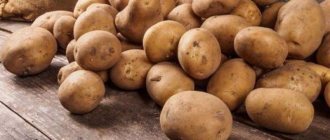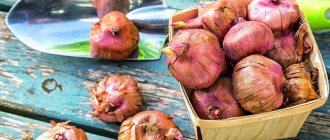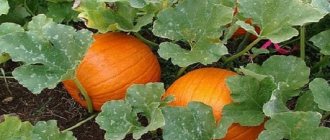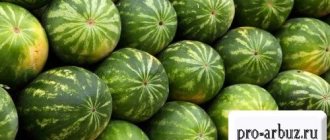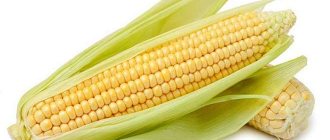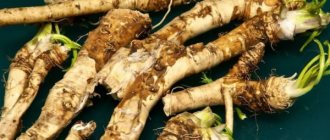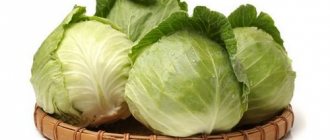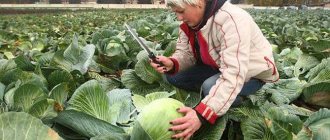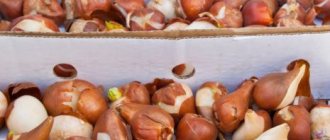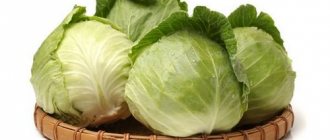Leeks are one of the most valuable vegetables grown throughout the world. It is rich in B vitamins, ascorbic acid, iron, phosphorus and calcium.
To get the maximum benefit from it, you need to eat it fresh.
Read the article about how to properly store leeks in winter at home so that they do not spoil, and how to prepare the vegetable for storage.
How to properly prepare for storage at home in winter?
The harvest should be done before the onset of cold weather, in sunny, dry weather . After the onions are removed from the garden, they immediately begin to prepare them for storage:
Gently shake off the soil from the stems and leave them in the garden for 2 hours.
- Sort the onions, removing spoiled and rotten specimens.
- The roots of the bulbs are trimmed, but without touching the bottom itself. 1/3 of their length is left.
- Remove diseased and yellowed leaves.
Sorted onions are ready for storage.
Varieties recommended for long-term storage
Early and mid-ripening varieties of leeks produce increased yields, but are stored only until the beginning of winter. Late-ripening varieties are tougher and sharper in taste, but are suitable for long-term storage, almost until the next season.
Early ripening varieties:
- 'Goliath';
- 'Kilima';
- 'Columbus'.
Mid-season leek:
- 'Tango';
- 'Casimir';
- 'Basteon'.
Late ripening varieties:
- 'Quarantine';
- 'Mercury';
- 'Bulgarian';
- 'Autumn Giant';
- 'Elephant'.
How to keep it fresh?
The maximum benefit can only be obtained from fresh bulbs . With the right approach, leeks can remain edible for 5-6 months. Store it in the refrigerator, on the balcony and in the basement.
In a refrigerator
The vegetable is stored well in the refrigerator if wrapped in plastic wrap. You should not place more than 5-8 tables in one roll.
Before putting it in the refrigerator, the vegetable is not washed, but simply cleaned of dirt . Before wrapping the vegetables in film, cool them in the refrigerator for 2-3 hours. This will prevent condensation from forming.
The package itself should also be cool. Several holes must be made in it so that the bow can breathe.
Advantages of this storage method:
- the vegetable does not lose moisture, remains juicy and meaty;
- reduced vapor permeability prevents the proliferation of microbes;
- The shelf life of onions in cling film is 5 months.
The only drawback of this method is that the onion will take up a lot of usable space.
On the balcony
Leeks can only be stored on a glazed balcony, provided that the temperature on it does not drop below -1 degree. Wooden boxes are considered the best packaging.
Leeks can be stored on the loggia only if the air temperature is stable. If it constantly fluctuates within a significant range, then the vegetables will quickly deteriorate and lose their taste.
Step-by-step algorithm of actions:
- Sand is poured into clean boxes. Its layer should not be more than 5 cm.
- Place vegetables next to each other.
- Cover the stems with parchment or other thick paper.
- The leek is insulated with a blanket on top. This will maintain a normal level of humidity in the box and protect the crop from freezing.
In the basement
Onions can be stored fresh in the basement for up to six months. It is recommended to place it in boxes or pallets, sprinkled with calcined river sand. At a temperature of about 0 degrees, the vegetable will retain all its beneficial properties.
The vegetable is placed vertically in the sand . So that it bends less, is not injured and does not rot. Sand is carefully poured between the rows. Layer thickness – 10-15 cm.
As necessary, the trunks are removed from the box by pulling the top. With this storage method, you can promptly notice and remove fruits with signs of spoilage.
Read more about how to store leeks in a cellar or basement here.
Three ways to store leeks are discussed in the video:
Is it possible and how to freeze leeks for the winter?
This method of storing vegetables is especially popular among housewives. The thing is that frozen vegetables are stored for quite a long time, and by defrosting them, we get an almost fresh product.
- Unfortunately, not all vegetables can be stored in this way, however, leeks are not included in the list of the latter and are perfectly preserved in the freezer.
- This method of preparing onions is very simple and does not require much effort. To begin, take the entire leek and rinse it thoroughly.
- Next, dry the vegetable stems and begin chopping.
- We cut the onion into rings, and their size can be adjusted at your discretion, focusing on what you will later use this product for.
Prepare onions for freezing
- When all the leek is chopped, place it on a cutting board or baking sheet and freeze it a little in the freezer. We do not recommend immediately freezing vegetables in bags, because the rings will freeze together and this will complicate their use in the future.
- When the pieces of stems are slightly frozen, we pack them in bags. It is advisable to freeze one portion of onions in one bag, so that later it will be convenient to use the vegetable and not spoil it with constant temperature changes.
- After that, put the bags in the freezer.
- It is best to maintain the temperature at -6°C.
- With this storage method, the onions will be suitable for consumption for 6-12 months.
Useful tips
To keep onions fresh longer, you need to take into account the following tips:
- You cannot cut leaves from a vegetable before storing it. Without greenery, it will quickly wither or rot due to attacks by microorganisms.
- If you plan to store the leek fresh, do not wash it. Removing the protective layer from the stems will lead to their accelerated deterioration.
- Onions do not tolerate temperature changes. Because of them, most of the vitamins are destroyed.
- Leeks do not like being in proximity to other vegetables and fruits. Store it in separate boxes, away from other crops.
- The onions need to be sorted periodically. Spoiled specimens are removed from the total harvest.
You can learn more about onion storage methods here.
Selection and sorting
Before sending leeks for winter storage, you must sort them out. Onions with strong and intact stems are stored longer, so they will be suitable for long-term harvesting. If the stem or leg is slightly damaged, then it is better to eat this specimen immediately, otherwise it may spoil during storage.
How to store leeks after harvesting
Vegetables are harvested already in August, but at this time they ripen completely and are used either for food or for short-term storage.
To preserve leeks until May, they are harvested before the first heavy frost: in October-November. It is then that the onion ripens completely and becomes resistant to various damages.
Rules
Basic recommendations for storing leeks throughout the season:
- Immediately after digging, the vegetable is dried in a well-ventilated area.
- Remove damaged, dry and yellow leaves.
- Get rid of broken, rotten, damaged plants.
- If signs of disease appear on the onions during drying, such specimens are immediately removed so as not to infect others.
- In its unprocessed form, the vegetable is stored only in a vertical position, having previously been cut off on both sides. The stems are removed by 2/3, the roots by half.
Optimal conditions
Suitable premises for storing leeks: refrigerator, cellar or basement, balcony, pantry. Temperature and humidity should be constant (+0...+4°C, 40–50%), and the room itself should be well ventilated and dry.
Important! The storage area is ventilated at least 2 times a month. This prevents air stagnation, removes unpleasant odors and destroys germs.
Selecting and preparing leeks for pickling
Leeks are a woody green vegetable with a mild onion flavor. It is consumed raw, stewed, and pickled.
The appearance of the product is the main criterion for assessing quality. On supermarket shelves it is wrapped in polyethylene, so it is almost impossible to smell it, but it is not difficult to detect damage through the transparent packaging.
What an ideal leek looks like:
- absence of spots and contrasting shades on it;
- the root is light and pure (the lighter the color, the richer the taste);
- the length of the white part is no more than 6 cm, this is the quality standard;
- stem diameter - not less than 1.5 cm;
- the surface should not be too dull or shiny;
- growths and compactions on the stems are unacceptable;
- the leg of the “correct” leek is cylindrical, the base is in the shape of an onion - a sign of a low-quality product;
- The onions should not be sticky, wet or slippery.
It is not difficult to prepare the product for further culinary processing. It has no husks, so cleaning takes minimal time.
The main task is to wash it well with running water and cut off the green part, which is usually not used for food. However, instead of throwing away the green feathers, you can freeze them and then add them to broths and soups for flavor.
The root is cut 4-5 cm from the edge. The white part suitable for consumption is cut in half lengthwise and washed again with running water, trying to remove sand between the plates.
Large leeks are cut into 4 parts, small ones - into 2 halves. Cutting into rings is also possible.
To prepare the marinade, use a variety of spices and herbs, vegetable oil, lemon juice, table or wine vinegar. The prepared onions are poured with hot liquid directly into the jars.
Reference. Leeks are sold year-round, but taste best from September to the end of April.
other methods
To extend the shelf life of leeks, housewives freeze, pickle or dry them.
Pickling
A slight heat treatment removes the bitterness from the vegetable, but retains the taste and vitamins.
Ingredients for the classic recipe:
- leek - 5 pcs.;
- sugar - 50 g;
- rock salt - 15 g;
- vinegar 6% - 3 tbsp. l.;
- water - 0.5 l;
- bay leaf - 3-4 pcs.;
- vegetable oil - 50 ml;
- black peppercorns - 5-6 pcs.
Procedure:
- The onions are cleaned of dirt, the green part and roots are cut off.
- Each plant is cut crosswise into 2-3 parts.
- Place vertically in clean glass jars.
- Boil water, add sugar, salt, bay leaves and pepper. Let it simmer for 5 minutes, then add vinegar.
- Keep on the fire for another 3 minutes, pour the hot marinade over the vegetables.
- Add vegetable oil to each jar, close with screw caps, and turn over.
- When the workpiece has cooled, it is placed in the basement, refrigerator or on the balcony.
Freezing
Leeks in this form do not lose their taste and density. Vegetables are first cleaned of contaminants and dried. Grind in any convenient way, place in a bag or plastic containers and send to the freezer.
Advice! The onion is frozen whole, first wrapped in parchment paper.
Drying
Freshly harvested crops are dried in the open air:
- Remove dying or damaged parts of plants.
- Vegetables are finely chopped.
- Spread onto parchment in one thin layer.
- Dry in a ventilated place or in a dark, warm room.
In an electric dryer or oven, the leek will be ready in 1-2 hours at a temperature no higher than +100...+120°C.
Storage Methods
There are several ways to preserve pearl onions for the winter. All methods help preserve its taste and medicinal properties.
How to preserve leeks for the winter:
- in a container with sand in the cellar;
- at room temperature in the apartment;
- in a special refrigerator compartment;
- drying;
- freezing;
- by salting;
- in pickled form.
Each person can choose the most convenient method for storing this wonderful vegetable.
Is it possible to leave onions in the cellar?
To preserve pearl onions using this method, you need to prepare wooden boxes and wet sand . Particular attention should be paid to sand. It should be moist, never soggy. Checking the moisture content of sand is very easy. You need to take it into your fist and squeeze it tightly. If the sand crumbles when you open your fist, this is the ideal moisture content for planting.
You need to pour 15 cm of wet sand into the bottom of the box, then place the plant in it, cover the bulb with a 15 cm thick layer of sand. Thus, only the leaves of the plant will be visible on the surface of the soil. From time to time it is necessary to check the leek; if the leaves of one plant begin to dry out or plaque appears on them, the root crop must be removed.
This method is good because until the middle of the winter season it is possible to receive a fresh and high-quality product on your table.
The optimal temperature in the cellar is -1−1 degrees, humidity 75-85%.
At room temperature
This method will help preserve the vegetable for 1 week. It must be collected in bunches of 5-10 bulbs along with leaves and placed in polyethylene. In this case, you first need to make several small holes in the polyethylene for ventilation. Pearl onions in a bag will perfectly preserve all the vitamins for a while.
In the refrigerator compartment
The vegetable can be stored in the refrigerator for 2 weeks. At the same time, he will not lose the taste of feathers at all. In the refrigerator, it can be stored in an intermediate chamber at a temperature of -1−3 degrees.
Drying Features
In order to preserve pearl onions for a long time, you can use the drying method . Only leek bulbs are suitable for such storage. They need to be cut into medium-sized rings. Place the rings on a sieve. Then dry in an oven or dryer at 60 degrees for 4 hours. Next, store the dried vegetables in a dry glass container, which must be hermetically sealed. Green leaves can also be dried, but separately. After drying, the leaves must be crushed; they are used as seasonings for any dishes.
